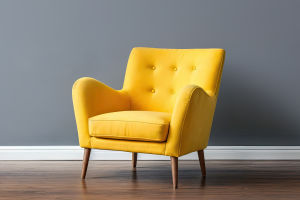The color coordination between clothing and bags plays a crucial role in daily styling.
Choosing the same color for clothing and bags, but using different tones, can cleverly balance the overall look, making it appear refined and elegant.
This approach to matching won’t make an outfit feel monotonous. Instead, it creates visual depth, highlighting a unique fashion sense.
First of all, matching clothing and bags in the same color family but in different tones brings a sense of harmony to the overall look. Using colors from the same family establishes a natural connection, preventing any clashing or abrupt contrasts.
The variation in tones helps avoid monotony. This subtle difference adds sophistication to the outfit, making the wearer look dignified, polished, and fashionable. For example, pairing a light beige coat with a dark brown bag creates a warm yet dynamic visual effect, offering a sense of understated luxury.
Secondly, mixing different tones of the same color can enhance the wearer’s style by introducing layers of visual interest. When light and dark tones are combined, the contrast enhances the three-dimensionality of the ensemble.
For instance, a light pink dress paired with a burgundy handbag exudes elegance, blending softness with sophistication. This contrast highlights the wearer’s personality and confidence while still avoiding the clutter that can result from too many colors.
Additionally, using different tones allows the fabrics and textures of clothing and bags to stand out. Different tones can emphasize the contrast between materials, elevating the texture of each piece and enhancing the entire look.
For example, combining a shiny, bright leather bag with clothing in the same color but in a softer matte fabric creates a striking contrast.
This is achieved through the play of light reflecting off the glossy bag while being absorbed by the matte clothing. This pairing not only adds dimension but also signals attention to detail, reflecting the wearer’s taste and sense of fashion.
Moreover, matching tones within the same color family is versatile enough to suit various occasions, whether casual or formal. In daily life, overly bright or complex color combinations can sometimes feel too showy or serious.
However, a monochromatic color scheme avoids these issues. The cohesive yet varied nature of this style creates a relaxed but stylish vibe. For example, pairing a light gray sweater with a dark gray handbag doesn’t feel jarring but instead adds an understated elegance.
In formal settings, such as business meetings or dinners, the same color strategy applied to suits and handbags—accentuated by variations in fabric and shades—can convey professionalism and sophistication while adding a personal touch, even in a serious atmosphere.
Another benefit of this tonal matching is its ability to create a flattering visual effect. Darker tones typically have a slimming visual effect, while lighter tones tend to expand perception. By pairing dark-toned accessories with lighter-colored clothing, the bag can stand out, while the contrast subtly shapes the body.
For instance, a light blue trench coat with a dark blue bag can elongate the figure and create a balanced, dynamic look that feels both calming and vibrant. This method of tonal coordination is not just stylish but also perfect for those seeking to highlight their best features through their outfit choices.
Choosing clothing and bags in the same color family but with different tones enhances elegance and style through subtle shifts in color. This method also visually modifies body proportions, making it suitable for various occasions.
Additionally, it’s a simple strategy, perfect for quick and easy dressing in daily life. In the world of fashion, the thoughtful use of tones within the same color family allows wearers to exude grace and sophistication, while also showcasing their keen sense of style.


